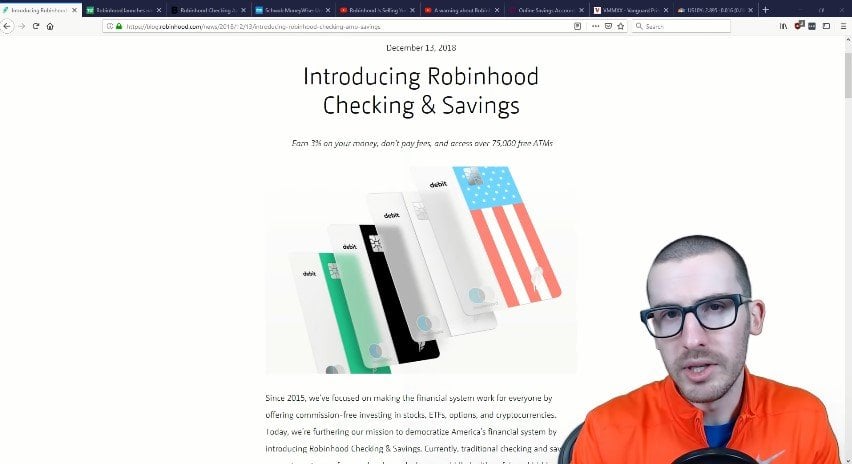Robinhood recently announced their new 3 percent checking and savings accounts to open in January 2019. Is this offer too good to be true? The problem with Robinhood 3 percent checking
The Problem With Robinhood’s 3 percent Checking Account
Q3 hedge fund letters, conference, scoops etc
Transcript
So Robin Hood recently announced that they're introducing Robin Hood 3 percent checking and savings in January of 2019. And in this case it looks like it's a free checking account with no fees. And it provides you 3 percent checking on your cash accrued daily. Now three percent is well above and beyond what any bank is offering today. And add to that you're getting free access to thousands of items and no fees on your account. So this seems to be an offer that's almost too good to be true. So I ask what's the catch.
First right off the bat having your money in a checking or savings account is expected to be a risk free option. So when I see an interest rate of 3 percent checking that immediately raises some red flags for comparison. Ally one of the highest pay an online savings accounts has an interest rate of 2 percent and the Vanguard Prime Money Market Fund Personally where I keep most of my cash holdings has an interest rate of two point three four percent and even the 10 year Treasury bond only has a yield of around two point nine percent. Now the way traditional banks work is that people will deposit money to the bank and the bank will pay them interest. The way the bank funds those interest payments is they write loans at a higher rate of interest than what they're paying out in savings. However Robinhood isn't a traditional bank. It's a brokerage.
What this means is that instead of writing traditional loans to be able to pay that interest. Robinhood instead invests that money ideally at a higher interest rate than they're paying out and uses the proceeds from those investments to pay interest on their accounts. However going back to the 10 year Treasury there's a bit of an issue here because if Robinhood is paying out 3 percent they can get anywhere near that. At least right now in the markets to get around a 3 percent checking yield they would need to increase the duration of the Treasuries they're purchasing to 10 20 or 30 years to get close to that 3 percent checking. However that's another issue within itself because checking accounts shouldn't be invested in long term bonds where they're subject to significant interest rate risk.
..........
Not only that the SIPC itself said today that it has serious concerns over Robinhood's new product. The Securities Investor ProtectionCorp. said that Robinhood' new product raised red flags and that the deposited funds may not be eligible for protection. This is despite the fact that Robinhood has already marketed this as being insured by the SIPC.






